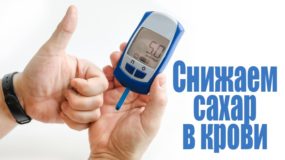In this review article, we will consider where the pancreas is located and how it hurts, describe the main diseases of the pancreas, provide recommendations on the use of medical devices and treatment of the pancreas at home with folk remedies.
The pancreas performs the most important functions in the human body, functioning in close interconnection with the digestive organs, and the slightest failure in its work will lead to negative changes in the harmonious process.
Doctors in ancient Greece considered the pancreas to be one of the most significant organs, called "pancreas", which translates as "whole meat." And indeed this body performs irreplaceable functions, the main of which are: regulation of energy metabolism and digestion. Digestion of proteins, fats and carbohydrates in the intestine occurs due to the enzymes of the gland, and its hormones act as regulators of the blood glucose level.
Where is the pancreas
The pancreas is located in the abdominal cavity (approximately the level of the first and second lumbar vertebrae). The organ is located behind the stomach and tightly adjoins it and the duodenum.
If you carry out a projection on the side of the abdominal wall, its location is about 5-10 cm above the navel.
The head of the gland is surrounded by the duodenum, which surrounds it in the shape of a horseshoe. Through the pancreas-duodenal arteries, blood supply to the pancreas is provided.
How does the pancreas hurt?

Pancreatic diseases such as pancreatitis, adenocarcinoma, stones in the excretory ducts, necrosis and diabetes are often found.
The following symptoms indicate pancreatitis - inflammation of the pancreas, as well as damage to it:
- pain in the area under the ribs in the left side;
- weakness;
- increased sweating;
- heart palpitations;
- fever;
- nausea, vomiting;
- yellowness of the skin and eye proteins;
- diarrhea;
- possibly a shock condition.
The pain with exacerbation of pancreatitis appears suddenly, has an acute girdle character - it diverges along the entire left side and can spread behind the back. Antispasmodics can not relieve pain, a slight decrease is possible in a sitting position and in a tilt slightly forward. Sometimes the patient feels "bursting" from the inside, physically feels an enlargement of the gland and pressure in the ribs, interfering with full breathing.
With increased pain, the vomiting reflex becomes stronger. Attacks of vomiting may precede the onset of pain. Often, vomiting appears in the morning or as a reaction to a meal, i.e. as a result of stomach cramps. After vomiting, which has a bitter or sour taste, relief comes for a while. Vomiting can be both systematic and appear periodically.
With prolonged attacks of vomiting, the stomach is cleaned with a probe and special enzymes are prescribed to eliminate the aggressiveness of the pancreas and stomach.
Pancreatic treatment at home

When pancreatitis is in the acute stage, complete fasting is required for 24-46 hours. During this time, the production of pancreatic juice will be minimized, reducing the load on the pancreas. A few days before the onset of exacerbation, a person loses his appetite. At this time, you need to drink non-carbonated mineral water, a rosehip broth or a solution of baking soda.
Symptoms of acute pancreatitis include vomiting and abdominal pain, which lasts several days. The same symptoms can signal cholecystitis, appendicitis, intestinal obstruction, or a stomach ulcer. To determine the correct diagnosis, an immediate visit to the doctor is required. Acute pancreatitis is treated only in a hospital setting.
Folk remedies
An effective and affordable method of treating the pancreas at home is to cleanse the organ and its vessels using a diet. In diseases of the pancreas, sweet food is removed from the diet (only the use of honey is allowed), fatty, fried and spicy foods, alcohol. It is worth giving up smoking. It is necessary to introduce restrictions in food; overeating must not be allowed. Useful cereals, especially buckwheat and oatmeal. Drinking regimen is also important. Water needs to be consumed a lot, you can add a little freshly squeezed lemon juice to drinking water.
The following folk remedies will help cure pancreatic pain.
Yogurt compress
It is used for pain and inflammation during an attack of pancreatitis. Soft tissue is moistened in yogurt and a compress is placed on the stomach in the stomach. It remains to attach a plastic bag on top and wrap it with a woolen scarf or scarf. The procedure is carried out for about six weeks.
A mixture of lemon and garlic
To prepare a folk remedy, you will need 1 kg of lemons, which are used with a peel, 300 grams of garlic and the same amount of parsley. All ingredients are ground in a meat grinder. Bones are previously removed from lemons. The mixture is stored in a refrigerator in a glass bowl and taken three times a day for 1 tsp. a quarter of an hour before eating food.
To enhance the effect, drinking the mixture is recommended with a useful infusion. It is prepared as follows: take in equal proportions blueberry, lingonberry, strawberry leaves, corn silkbean pods. One tablespoon of the resulting collection is poured in a thermos with one glass of boiling water and infused overnight. A glass of infusion is divided into three parts and drunk with a garlic mixture. Treatment is carried out for three months.
Parsley milk broth
Rinse well with 800 grams of parsley, finely chop and pour boiling milk. To prepare a decoction, use enameled dishes. Milk should completely cover the greens. The broth is languishing over low heat, milk must not be allowed to boil. This portion is enough for a day. Reception is carried out in 2 tablespoons every hour.
Medical facilities

Groups of medications are used to treat pancreatic diseases.
Painkillers
Antispasmodic drugs are used: Drotaverin, No-Shpa, Baralgin, Papaverin. In case of moderate pain, Iburofen or Acetaminophen will help. It is permissible to use analgesics (Aspirin or Paracetamol) and antihistamines such as Diphenhydramine, Platifillin, Atropine.
Enzyme products
To reduce the production of enzymes, patients are prescribed "Contrical", "Aprotinin". When an acute attack goes away or with chronic pancreatitis, enzyme therapy is needed to help normalize digestive function. In this case, appoint: "Mezim", "Panzinorm", "Pancreatin", "Festal", "Creon". Their use is contraindicated in allergies to pork protein, since this component is the basis.In childhood, such a reaction can provoke intestinal obstruction, then herbal remedies will come to the rescue: Somilase, Unienzyme, Somilase, they include papain or rice fungus.
The use of enzymes occurs after a meal. The required dosage is prescribed by the doctor individually. In some cases, after a course of treatment, maintenance therapy is prescribed, which may be necessary throughout life. In case of violation of exocrine function, means are used that regulate blood sugar levels - insulin preparations.
In diseases of the pancreas, one cannot resort to self-medication, which can provoke diseases such as diabetes, necrosis, blood poisoning.
Antacids
To relieve pain and prevent irritation, medical products in the form of gels or suspensions are used. Their task is to neutralize hydrochloric acid (Fosfalugel, Almagel) or to reduce its production (Omez, Proseptin, Contralock, Omeprazole, Ocid, Gastrozole).
Pancreas sizes
The pancreas among the organs producing enzymes in size is in second place after the liver. From the fifth week of pregnancy, its formation begins. The gland of a newborn is 5 cm, by the year it reaches 7 cm, and in a ten-year-old child - about 15 cm. The final pancreas sizes are formed by the age of sixteen.
The broadest part of the pancreas of an adult is the head: it reaches a width of 5 cm, a thickness of 1.5-3 cm. The body is the longest part of the body, the width of which is 1.7-2.5 cm. The norm is the length for the tail - up to 3.5 cm and a width of about 1.5 cm.
To identify pathologies in medicine, ultrasound is used, as a result of which the shape and size of the organ are determined, indicating its condition. Other research methods are difficult because the pancreas is deep enough.
The structure of a healthy organ is homogeneous. Minor changes in the size of the head, tail or body can be considered the norm in the case of excellent indicators of a blood test for biochemistry.
Pancreatic functions in the body
The pancreas is two types of tissue, each of which is responsible for its specific functions: endocrine and exocrine.
Exocrine function
One of the most important roles of the pancreas in the body is the production of pancreatic juice, which consists of salts, water, enzymes (proenzymes).
Pancreatic enzymes include:
- Trypsin and chymotrypsin (help digest protein);
- Amylase - breaks down carbohydrates;
- Lipase - completes the process of splitting fats that were under the influence of bile from the gallbladder.
The pancreatic juice contains trace elements - acid salts, which provide an alkaline reaction. This neutralizes the acid of food coming from the stomach and helps to absorb carbohydrates.
The secretion of pancreatic juice is in direct connection with food intake. This means that when eating different foods, juice enzymes of different composition and volume are produced.
Endocrine function
The secretion of hormones - glucagon and insulin - into the blood is the secretory function of the pancreas.
- Insulin regulates carbohydrate and lipid (i.e., fat) metabolism. It promotes the flow of glucose from the blood into the cells and tissues of the body. Due to this, there is a decrease in blood sugar. Violation in the production of insulin provokes the development diabetes mellitus.
- Glucagon can be called an insulin antagonist, as it is designed to increase blood glucose levels. Alpha cells that produce glucagon help to produce the substance lipocaine, which prevents fatty degeneration of the liver.
- Other hormones indispensable in the body are also produced, for example, ghrelin, which is responsible for appetite and stimulates the consumption of food.
Many pancreatic disorders are easier to prevent than to cure. Refusal of bad habits (alcohol and smoking) and a healthy diet minimize the risk of organ disorders.










